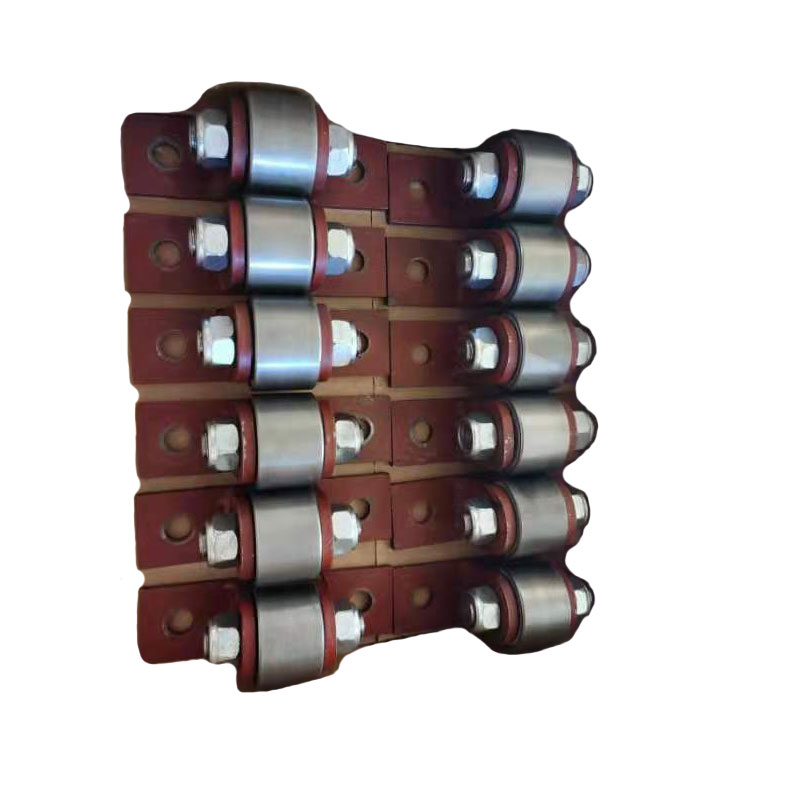The Advantages of Overhead Conveyor Bearings in Industrial Automation
Industrial automation has revolutionized the manufacturing and material handling industries, streamlining processes and improving efficiency. Within this automation landscape, overhead conveyor bearings play a crucial role in ensuring smooth and reliable movement of goods. Let's explore the advantages of overhead conveyor bearings in industrial automation.

1. Enhanced Efficiency and Productivity:
Overhead conveyor bearings enable a continuous and efficient flow of materials throughout the production process. By minimizing friction and providing smooth rotation, they facilitate the seamless movement of loads along the conveyor system. This translates into increased productivity as it reduces the time and effort required for manual handling, transfers, and sorting operations.
2. Optimal Space Utilization:
Overhead conveyor systems are designed to utilize the vertical space within a facility, allowing for efficient use of limited floor space. Overhead conveyor bearings support this functionality by providing a reliable means of conveying goods above ground level. This enables businesses to maximize their operational footprint, optimize workflow, and make the most efficient use of available space.
3. Flexibility and Adaptability:
Overhead conveyor bearings offer flexibility in system design and layout. They can be customized to suit specific production requirements, such as load capacity, speed, and direction changes. Additionally, overhead conveyor bearings can be integrated with other automation technologies, such as robotic arms or automated sorting systems, to create a seamless and synchronized material handling process.
4. Improved Safety:
Safety is paramount in any industrial setting, and overhead conveyor bearings contribute to a safer work environment. By automating the movement of materials, they reduce the need for manual lifting and carrying, minimizing the risk of injuries and strains for workers. Furthermore, overhead conveyor systems can be equipped with safety features, such as emergency stop buttons and sensors, ensuring quick response times and preventing accidents.
5. Reliable Load Handling:
Overhead conveyor bearings are designed to handle heavy loads and withstand demanding operational conditions. They provide stable and consistent support for goods, preventing unnecessary movement or shifting during transport. This reliability in load handling ensures the integrity of products, reduces the risk of damage or loss, and contributes to overall operational efficiency.
6. Lower Maintenance Requirements:
Overhead conveyor bearings are engineered for durability and longevity, resulting in reduced maintenance needs. The bearings are designed to withstand the demanding nature of industrial environments, including temperature variations, dust, and debris. This results in decreased downtime for repairs and maintenance, allowing businesses to maintain consistent production schedules and minimize costs.
7. Cost Savings:
Implementing overhead conveyor bearings in industrial automation can lead to significant cost savings. By improving efficiency and productivity, businesses can reduce labor costs, optimize production cycles, and minimize errors or delays. Additionally, the durable and low-maintenance nature of overhead conveyor bearings translates into lower operating and maintenance expenses over the long term.
Conclusion
Overhead conveyor bearings are vital components in industrial automation, enabling efficient material handling, maximizing space utilization, and improving productivity. Their role in providing smooth and reliable movement of goods contributes to enhanced safety, flexibility, and cost savings. By incorporating overhead conveyor bearings into their operations, businesses can achieve higher efficiency, reduced downtime, and increased overall profitability in the realm of industrial automation.
246
0
0


Comments
All Comments (0)